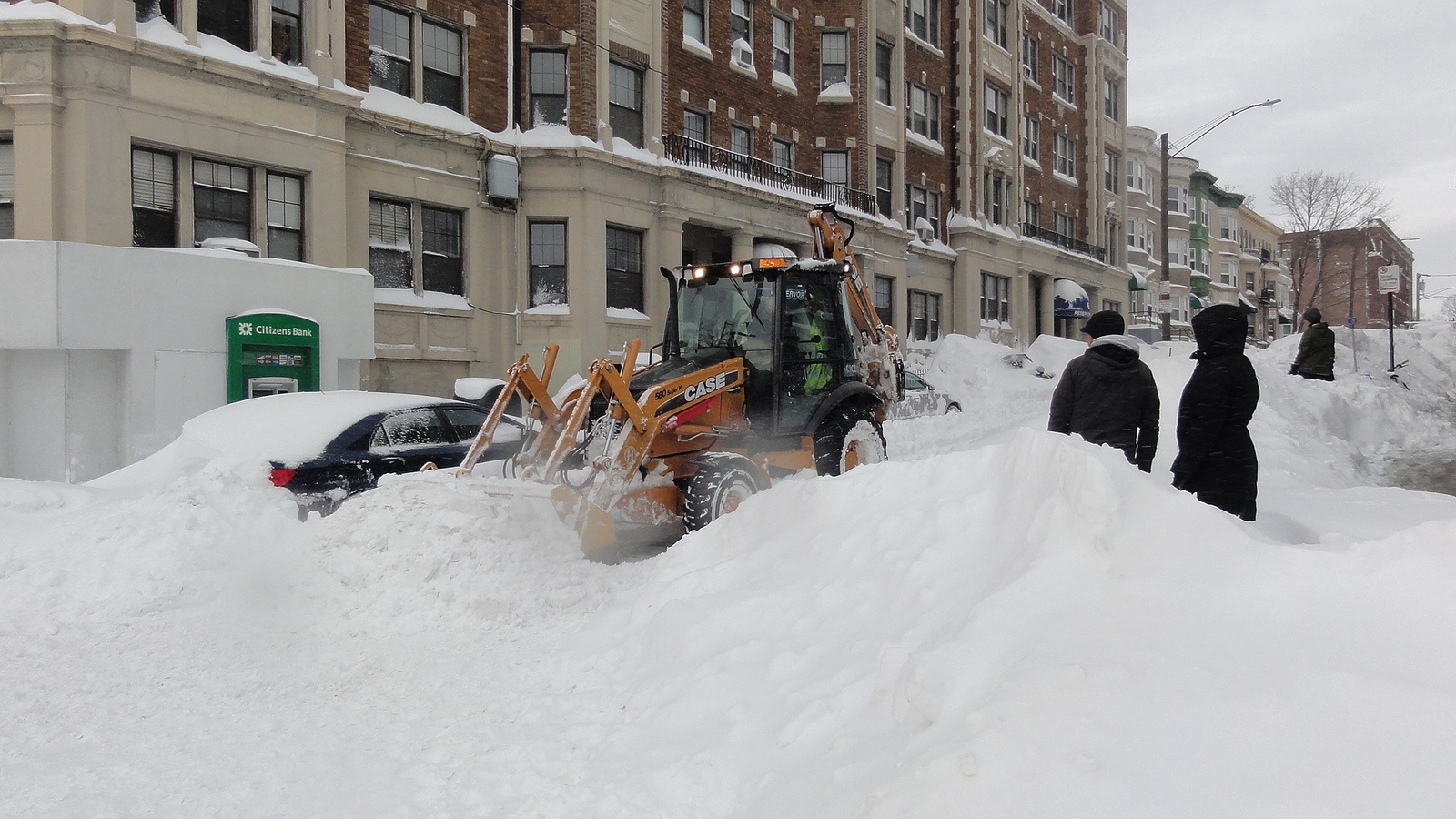
Winter Storm Juno is poised to drop between 20 and 30 inches of snow on the Greater Boston area beginning Monday, Jan. 26. The thought of nearly three feet of snow is daunting, almost claustrophobic, and already airlines and the MBTA are mobilizing against the blizzard. Despite the imminent mountains of snow, though, does Juno stack up to some of the region’s most historic snowfall totals?
Update: MBTA service will be canceled, Tuesday. Read more.
Assuming Mother Nature dumps as much as predicted, it sure does.
You might recall Winter Storm Nemo, the 2013 storm that also dropped more than two feet of snow over Boston. If Boston receives the estimated 20 to 30 inches, Juno could render one of the top snowfall totals ever recorded in the city’s history surpassing Nemo and others.
Winter Storm Nemo was Boston’s fifth highest recorded snowfall since the measurements at being taken in 1892 with 24.9 inches of snow. Nemo was so devastating, in fact, that it was responsible for the deaths of 15 people in the Northeast and Canada and left hundreds without heat or electricity.
Juno has the potential to fall somewhere around Nemo, but it could also leave the very highest accumulation of snow ever recorded, with snowfall rates as high as two to four inches per hour according to the National Weather Service.
The most snowfall totals in Boston history are as follows, accounting for official measurements taken at Logan Airport:
- 2003: 27.5 inches
- Blizzard of ’78: 27.1 inches
- 1969 nor’easter: 26.3 inches
- April Fool’s Day Blizzard, 1996: 25.4 inches
- Blizzard of 2005: 22.5 inches.
In order to combat the snow, Mayor Marty Walsh said the Department of Public Works is ready with over 700 pieces of equipment and over 35,000 tons of salt.
“Last year up to my swearing in I think there were three major storms,” Mayor Walsh told BostInno back in December. “The cost of those three were the same as the next six. It’s about saving taxpayers’ money and using that money better. At the end of the day, that’s money we can use somewhere else that’s not on snow.”

